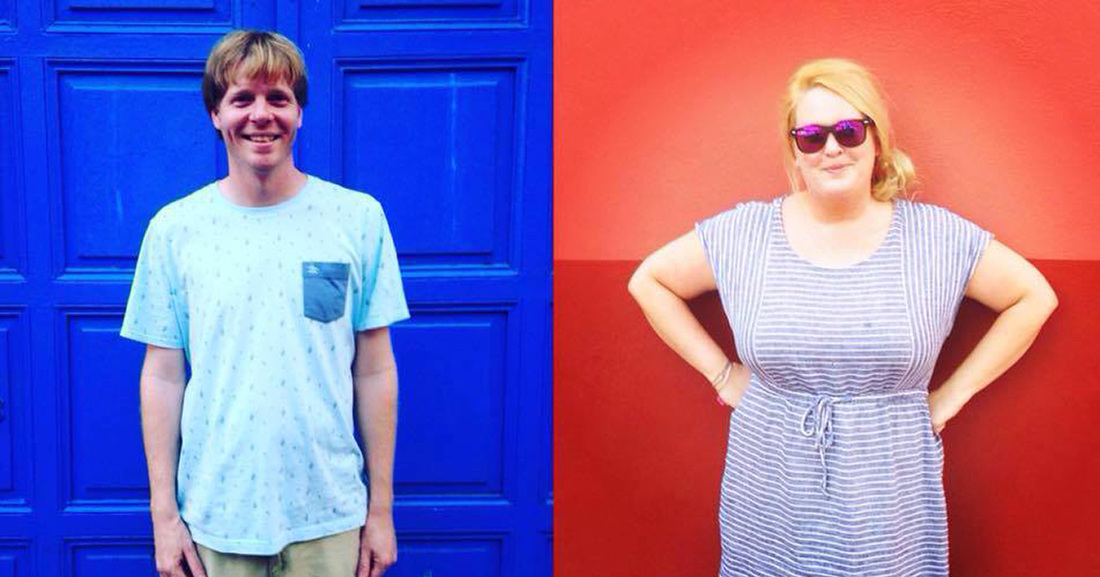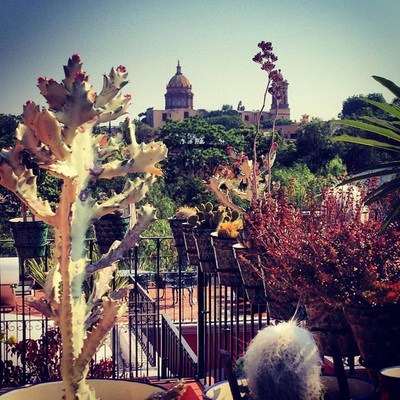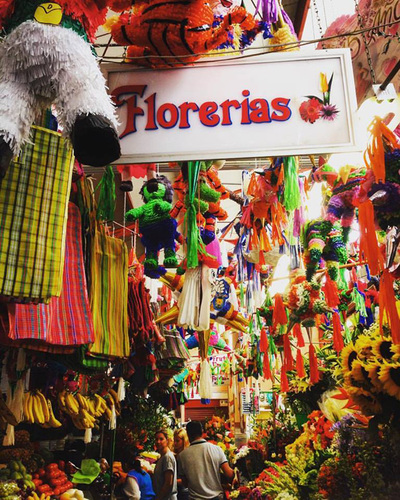A Love Affair with Color - My Honeymoon in Mexico
On honeymoon in San Miguel de Allende, Mexico, columnist Martha Whitney Butler starts a new life chapter with the vivid colors and eye-opening perspectives of an old culture.
- story and photos by Martha Whitney Butler
Click on any of the thumbnails below to open gallery!
Directly after the festivities and a monumental all-nighter, we found ourselves passed out from exhaustion in the large, crowded Mexico City airport. When our zombie bodies walked through the doors and into the orange early morning light of Leon we knew we had finally arrived.
We left stress at the door and took a car to our final destination, San Miguel de Allende. Our sweet driver, Miguel, did his best to entertain us with the cultural and political history of the area while we repeatedly nodded off in mid-conversation. In a dream, we passed through mountains and deserts filled with strange plants that danced in the sun and waved us into the city. (This was likely the hallucinatory effects of altitude sickness, but we enjoyed the show and kept our eyes peeled for roadrunners and coyotes.) As we began our descent into San Miguel we awoke, startled by the vivid colors and enchanting historic buildings. It was the beginning of our honeymoon. We were in love with each other and together we fell in love with this new place and its colors. Immediately I could see this was a place of art. The buildings reflected the colors of the sunset and were accented with deep turquoises — the color palette of our wedding. It was somehow so foreign, but so familiar that we just melted (almost literally) into the landscape like we belonged there.
It was that kind of place. It was a place full of life, colors, artwork, smiling faces, fireworks, cacti, and cobblestone walkways that all led to new adventures. I suddenly spoke Spanish and didn’t care for air conditioning. I ate cactus for breakfast, lunch, and dinner and drank tequila like it wasn’t my mortal enemy from my college days. The folk of Mexico and I had become one, and it was in those hot, hazy, tequila-infused nights that I finally understood color.
This wasn’t a place that paved over their rough cobblestone streets to make it easier to walk on them. Instead, they seemed to be adding more and widening the walkways. Things weren’t polished, they were patinated and loved for it. To understand Mexican folk art, you have to embrace primitive. You have to love color as a distraction from crude craftsmanship. In a place called Atotonilco, a 20-minute drive from the city, we found a revered artists’ market. Not a lot of people had set up on this weekday and I felt almost like the Pope as I walked through with the vendors vying for my attention and pesos. They totally deserved both. It reminded me of a Mexican ArtsAlive!.
Each vendor wasn’t demonstrating per se, but they were set up making their objects out of necessity. I stopped in one booth where a lady was using a can-opener-like apparatus to cut the tin for her shadow boxes. I thought, “Why isn’t she just using one of those metal lasers to cut that?” and then realized what a foolish question that was to ask myself. She had made hundreds of these things in all shapes and sizes, only to be selling them to some foolish gringa who had the audacity to question her methods.
It wasn’t the ease of her craft that enticed me to buy her things; it was her work ethic. I appreciated her labor, her willingness to show up in the 90+-degree heat and cut sharp, rusty tin by hand. I bought several of her pieces, and I didn’t even haggle (which is weird for me). I went stall-by-stall and did the same thing, watching the artists create. Several of them stopped to pay me attention and show me their artwork. It was a very moving experience, the same feeling I get when I watch artists at home in Bay St. Louis. I felt like a stitch in the embroidered tapestry of something bigger than myself.
Each object was handmade. Every glance at an item prompted the shopkeeper to say it was made here. There was nothing paved over about this art. I left with a greater understanding of folk art, something I must have never captured in my years of college classes on the subject.
To see my new husband so astonished at all that was happening was a delight, and his encouragement of my purchases was even more delightful, as I had made a vow that I wouldn’t work on our honeymoon. But when you love something, it really isn’t work. People have always told me that, but we both understood it during this trip. I felt like Marco Polo, compelled to bring these objects and share my stories about them with my customers back home. Bringing back items from travels to offer to people in the community is in the blood of every merchant, just like bringing back inspiration is in the blood of every artist. I’m grateful to be both and so thankful that I got to experience what I like to describe as “Bay St. Louis in Spanish.” Nothing thrills me more than the prospect of getting to dwell in color during Frida Fest on July 9th, when the downtown is converted into a little Mexico of sorts. I will forever relish my newfound ability to breathe blues, hear reds, and embrace the warm oranges of love. 
A sculpture in El Pegaso, an awesome restaurant recommended by an American ex-pat. The walls were filled with Katrina doll shadow boxes, some of which we purchased as honeymoon souvenirs. The server even had the artist come sign them for us while we were at our table. It turns out the artist was also the chef!
Comments are closed.
|
Categories
All
Archives
July 2024
|
Shoofly Magazine Partners
Our Shoofly Partners are local businesses and organizations who share our mission to enrich community life in Bay St. Louis, Waveland, Diamondhead and Pass Christian. These are limited in number to maximize visibility. Email us now to become a Shoofly Partner!

















































 RSS Feed
RSS Feed























